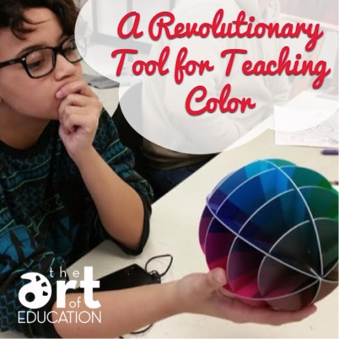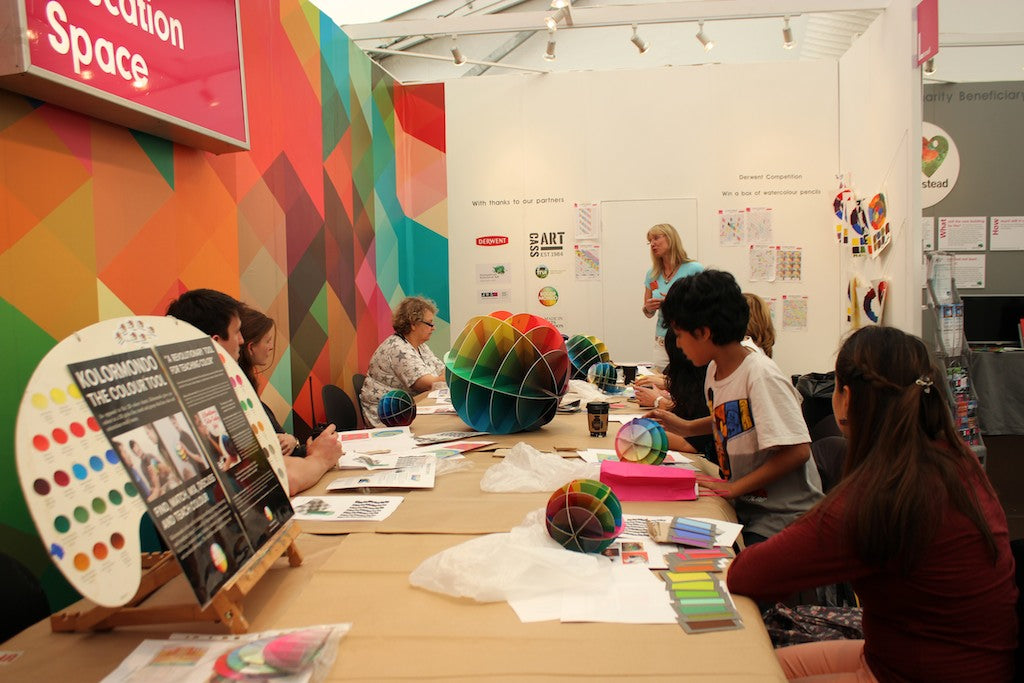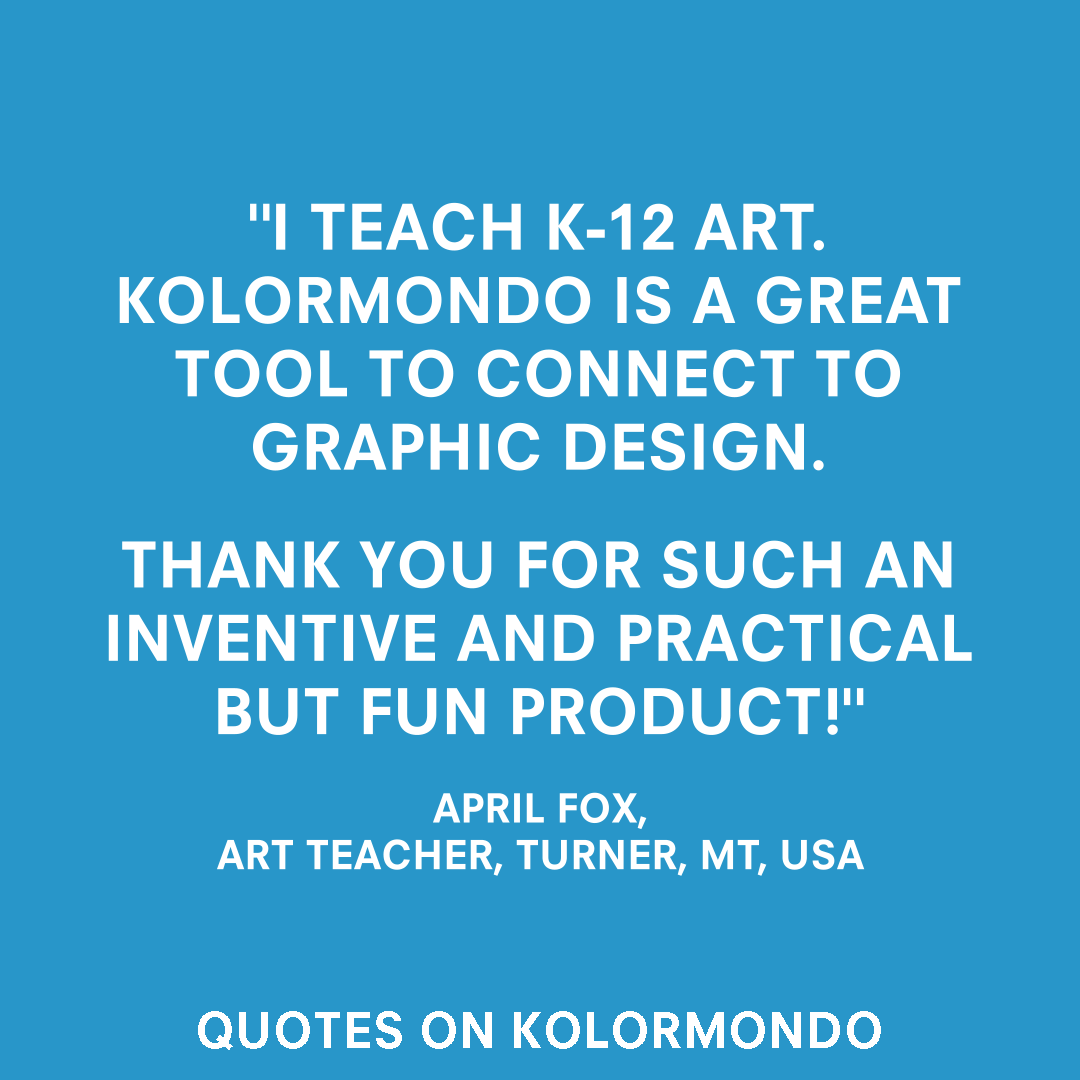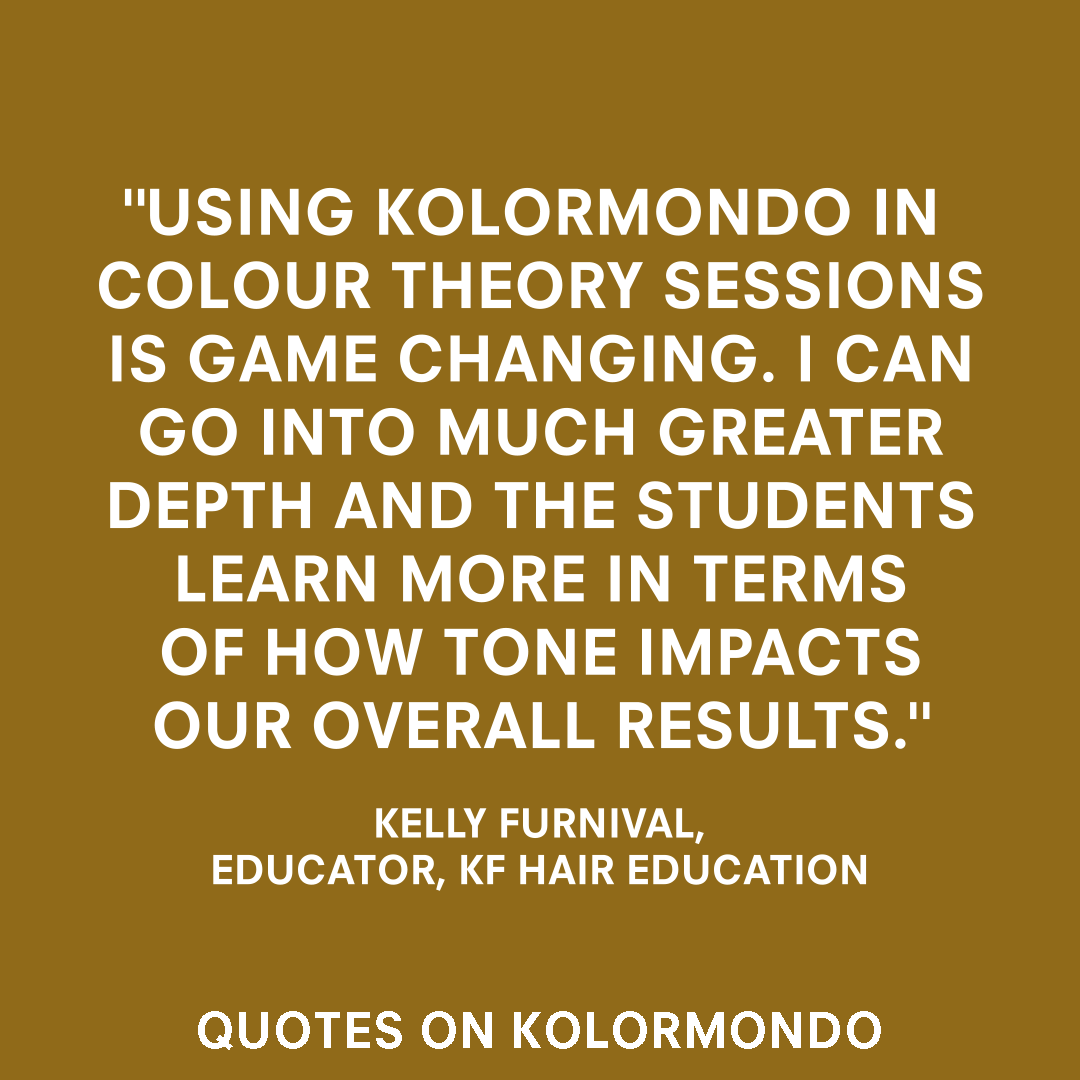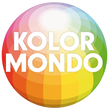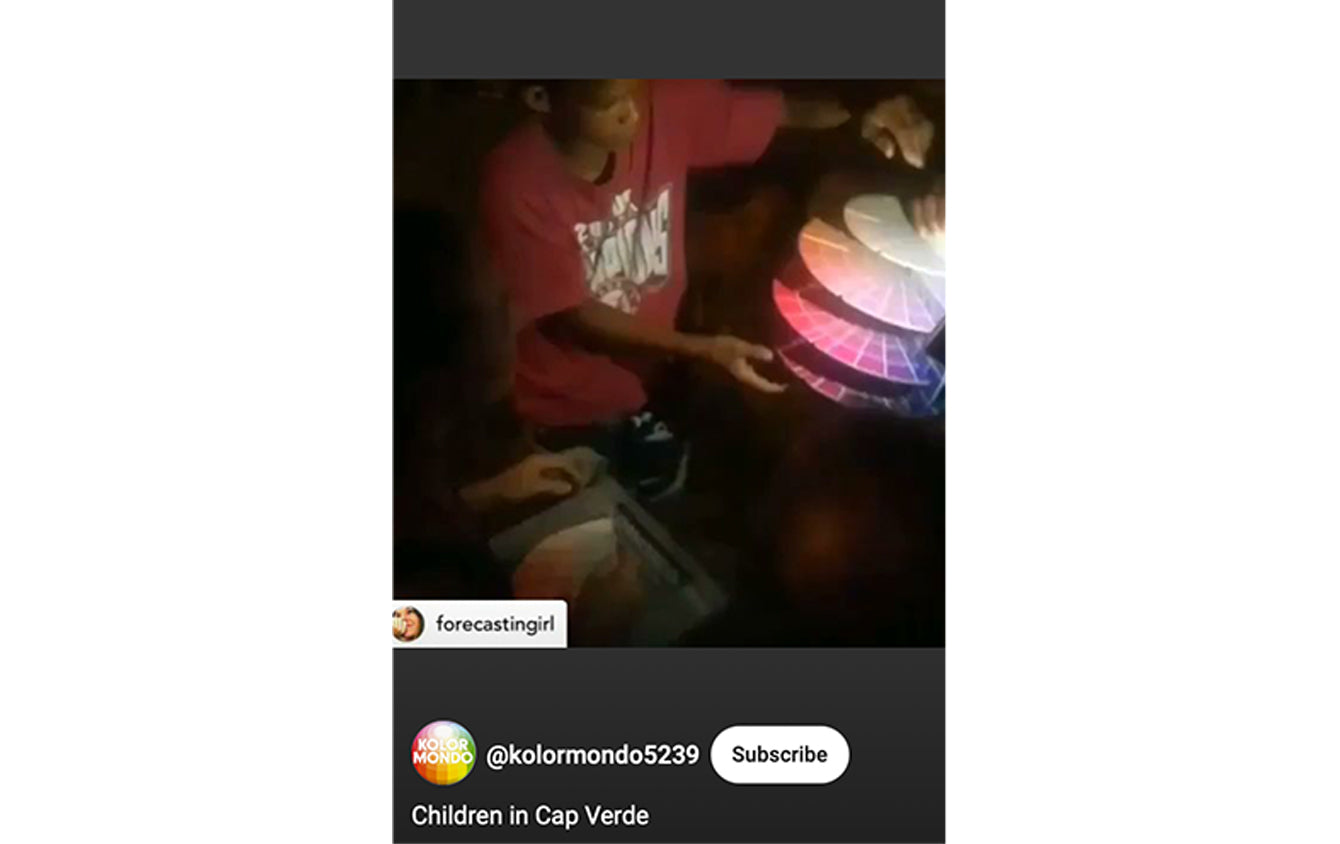USING KOLORMONDO IN EDUCATION
Kolormondo is a unique tool to enhance understanding; it explains the complexity of color while making it simple.
Students are often frustrated when mixing or trying to understand color theory. But thinking of color as a globe, that has three dimensions, it becomes intuitive and easy.
The North Pole in the Kolormondo globe represents white, and the South Pole represents black, and the axis that runs between the North Pole and the South Pole going through the center of the earth represents the sequence of grays, or neutral colors that go from the dark to the light.
So there, in the middle, between the dark and the light, are all those neutral colors. They’re running down the center. And then around the equator, outside, at the middle of the globe, is that band of colors that represent the hues, like yellow and green, purple and orange.
If you start looking at it that way, you can see that we can move colors in several directions. Firstly, we can move in either direction around the Equator. A red will gradually become orange and then yellow and eventually green, while if you go the other way the same red would become purple, and blue and also end up in the green. Like that we have gone around the color circle, touching on all the hues. So HUE is the first dimension.
If instead we move from the red color up toward white, it’s going to get tinted out, it’s going to get lighter and lighter. Going down it gets brown and progressively darker. Going up or down we see the VALUE of the color change. This is the second dimension.
Lastly, we take the red and move it in towards that center gray color. It will get progressively less and less bright until it become very muted and almost neutral. That is the third dimension, also called SATURATION.
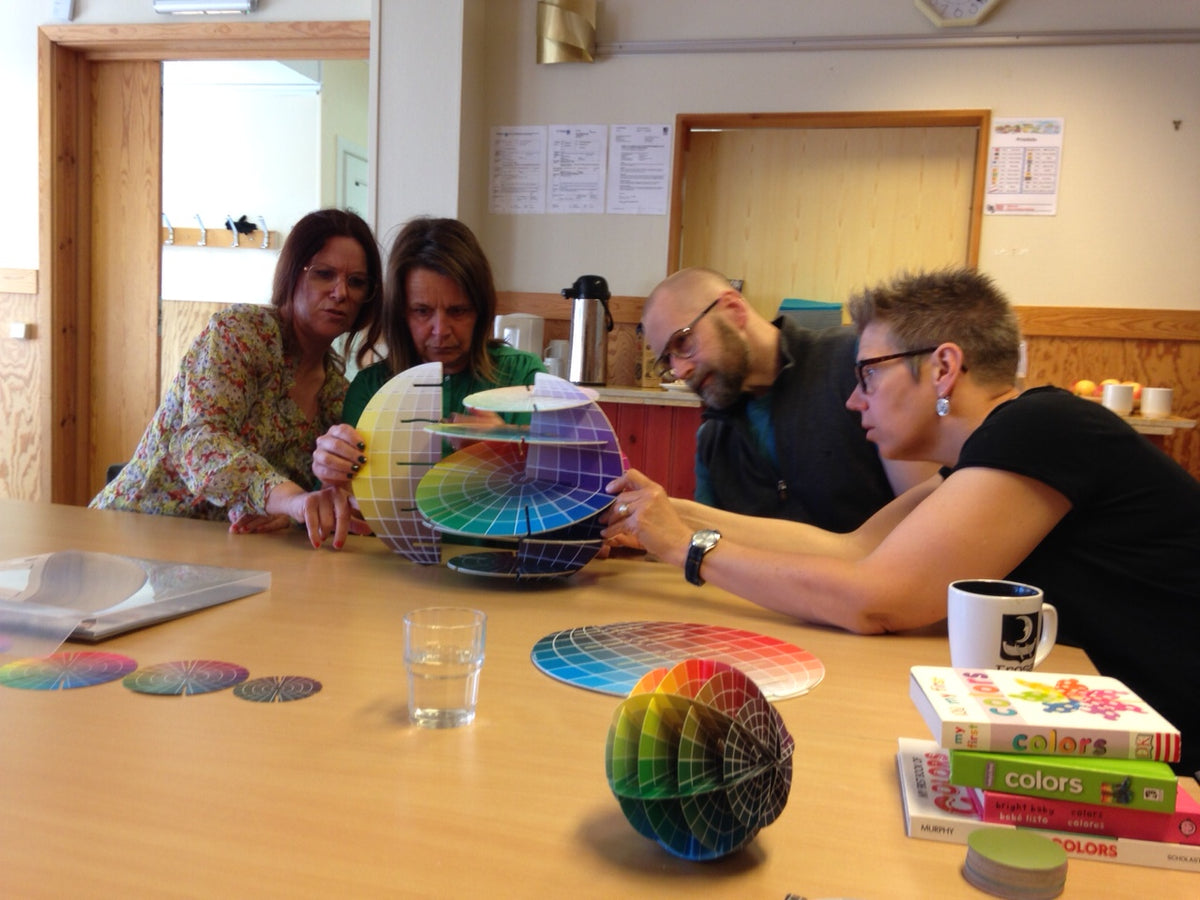
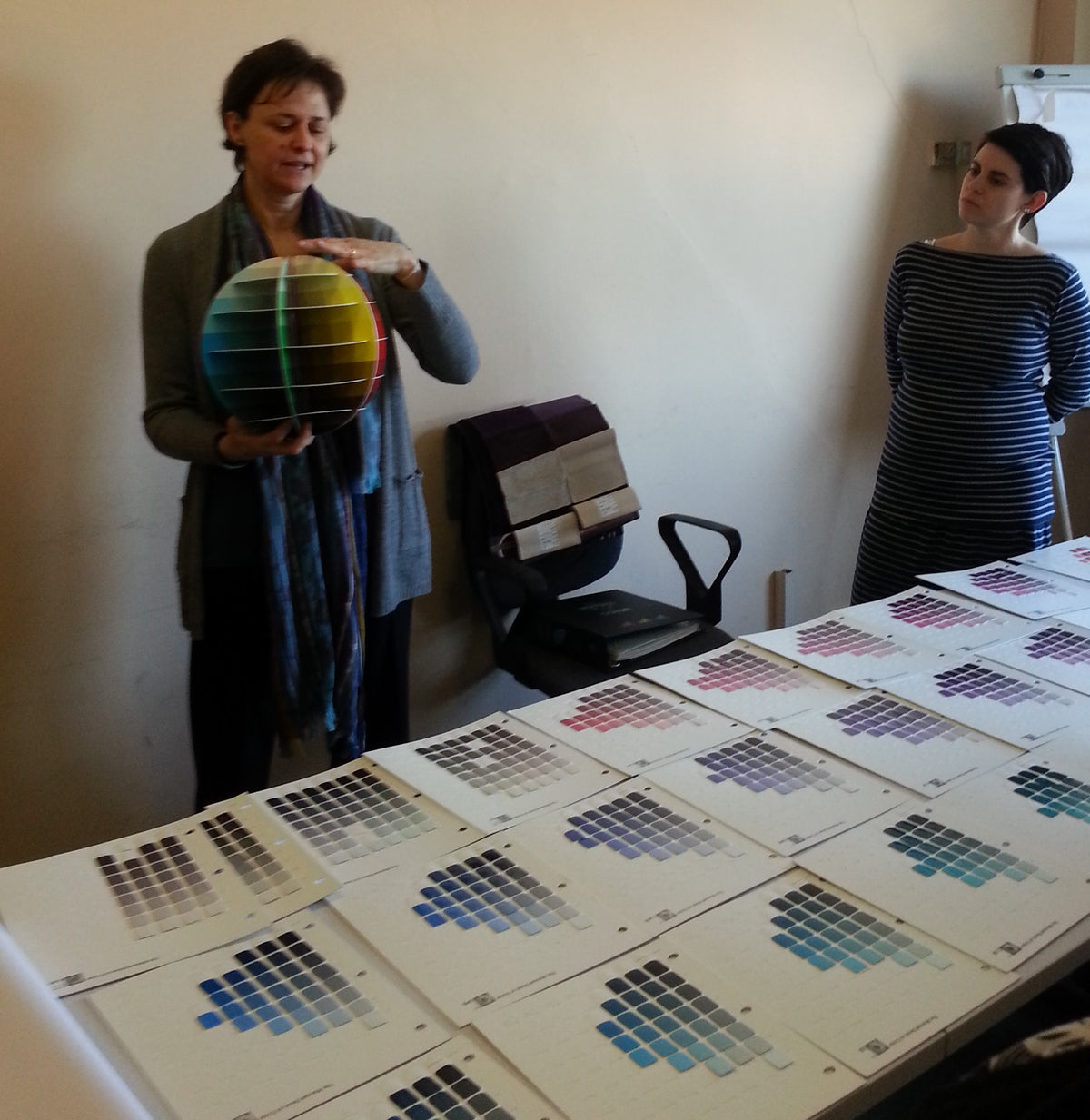

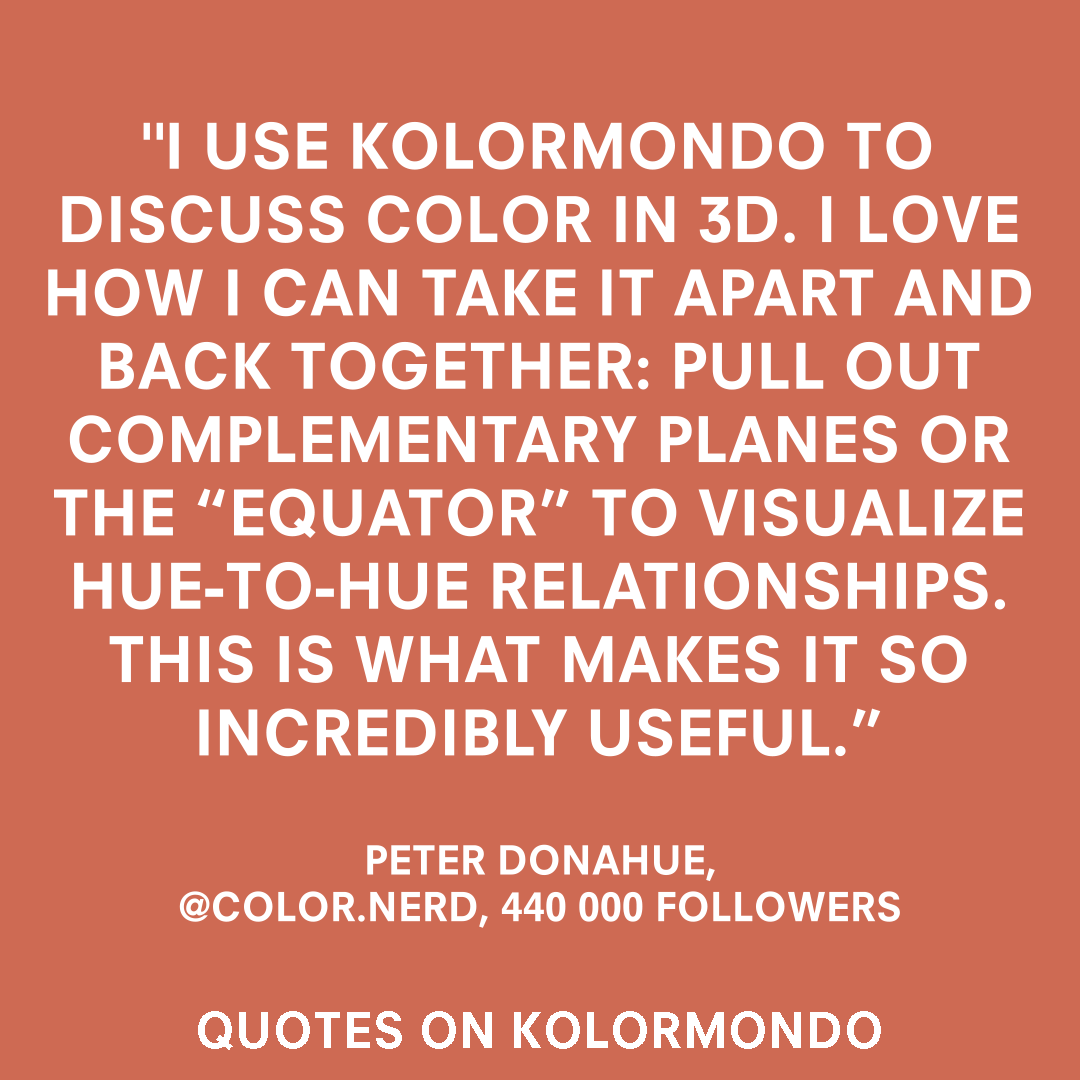
THREE DIMENSIONS OF COLOR WITH KOLORMONDO
Kolormondo is based on cyan-blue, magenta-red and yellow: also called CMY. You can find these 3 colours forming a triangle on the Equator piece. All the other colors are mixtures of these three.
The idea of seeing color in three dimensions is centuries old, but is only with Kolormondo that you can see, touch and build the world of colors. Students can now explore and experiment colours based on cyan, magenta and yellow, and then actually see colors in relationship to each other.
Everything you teach about color theory is somehow connected to this three-dimensional model. When a teacher presents a color theory lesson, he/she can relate it to this model. Thus, the students will have a strong foundation for their understanding. You can look at it as an ABC-book. How would post-graduate students of mediaeval grammar in the Latin language do without basic literacy? It goes without saying that they must first learn to read. Similarly it makes color understanding and color mixing so much easier, when you use CMY and see the 3D model of Kolormondo.
And Kolormondo is enjoyed by students of all ages. It is being used in kindergartens, as well as in many color theory classes in universities – in fashion, graphic design, product design, art, printing, architecture etc. They often introduce the subject of color by showing the Kolormondo globe. Some universities buy the Kolormondo Mini in stock and hand them out to their students as part of the course material.
